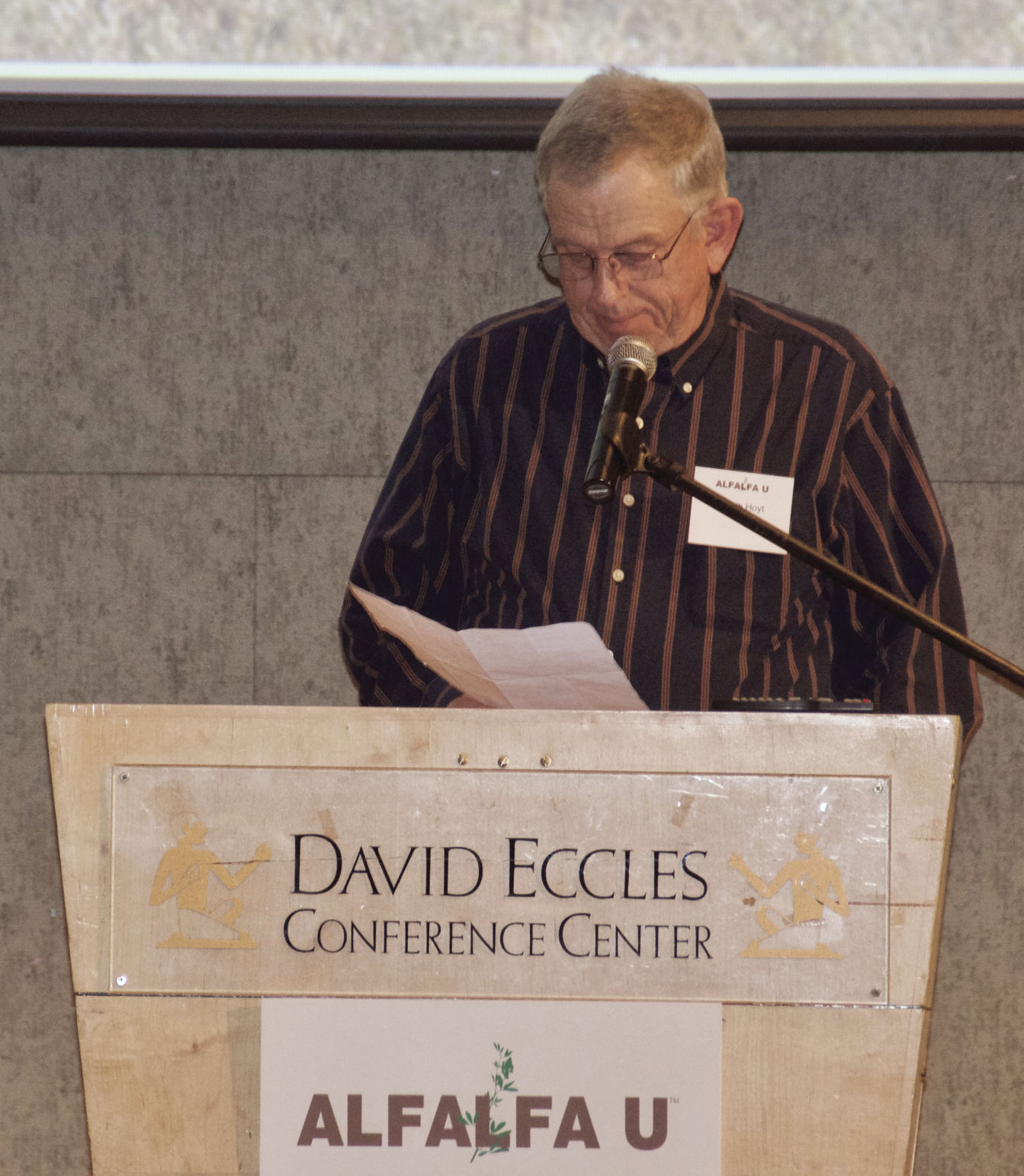Western United States
Seth Hoyt, hay market analyst from Ione, California, said hay stocks in the entire United States is down 10 percent from the previous year and down 9 percent from the previous year in the western states.
“Alfalfa acres are down 2 percent across the U.S. and yields are also down, less 4 percent,” said Hoyt, who added exports to China for alfalfa continue to grow. In 2017, 1.2 million tons of were exported to China. The Chinese market is for non-GMO alfalfa and continues to be strong as long as milk prices are high.
Saudi Arabia is also a growing export market. The Arab country is limited in what it can grow for dairy farms based on government regulations. Hoyt expects to see Saudi Arabia move in on U.S. alfalfa markets.
“There seems to always be a market for high quality hay, but supplies continue to become tighter. Weather is a big factor in growing alfalfa and other hay,” Hoyt said.
Drought conditions continue in parts of the western states and are nearing severe drought conditions. This also has led the dairies to not purchase as much high quality hay because they can’t afford it.
“Prices on early hay will be stronger in some areas and $15 to $30 more per ton than in 2017,” Hoyt said. “Exports will be more of a driver of prices than dairy customers in the western states.”
—Jennifer Carrico
Western Plains
Heath Dewey, a Colorado hay market reporter, said the hay market has been good this year.
Reporters look at both relative feed value and relative forage quality. Colorado reports are typically based on RFV.
Dewey gave his report on Feb. 6. He said, at the time, horse owners in the state have boosted demand for small square bales.
“We are seeing premiums of $1 to $1.50 more a bale than you see for a typical cow-calf operation,” he said.
Compared to last year, the grinder market went from $75 to $80 ton to $110 to $115 a ton. Also, good quality alfalfa was averaging at the time around $150 a ton. Dairy hay increased to $180 to $200 a ton, with some even going for $210-plus.
“Anyone getting over $200, the hay is testing pretty high,” he said.
The grass hay market is also doing well, with the price per ton higher than alfalfa. There is a shortage, he said, and livestock producers are often holding on to their hay for their own operations.
“I think, for the most part, a lot of people are pretty happy with the hay market right now,” Dewey said. “But there is a lot of concern out there that the lack of moisture and the drought we have seen that we are going to be in short supply next year.”
—Amy Bickel
Kansas
There is less hay on the market in 2018, thanks to early-season drought in Kansas in 2017, coupled with donations to fire-afflicted areas and late season drought, according to Kim Nettleton, hay market reporter for the Kansas Department of Agriculture.
Too, alfalfa hay seedings are down 10 percent, Nettleton said.
Because of lack of hay inventory, prices for all hay types are higher.
For premium quality alfalfa, per ton prices increased to $170 per ton in December in north central Kansas; $160 in southwest Kansas; $165 in northwest Kansas, $160 in south central Kansas and $150 per ton in southeast Kansas.
Stocks of all hay are down about 15 percent from 2016, with total hay production down 32 percent and yield down 0.70 tons per acre in 2017 compared to previous years. Grass hay acreage and yield is down, while cattle herds are expected to grow, Nettleton said.
The state’s feedyard industry used nearly 160,000 more tons of alfalfa hay in 2017 than the previous year. With tight supplies and growing cattle numbers, all types of hay should be worth more in 2018, she added.
—Bill Spiegel


